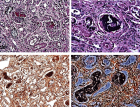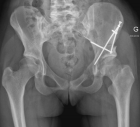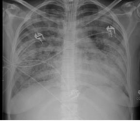About University of Belgrade
University of Belgrade
Articles by University of Belgrade
The body composition analysis: Differences between students and the trend of their change
Published on: 22nd March, 2018
OCLC Number/Unique Identifier: 7493653979
Anthropometric characteristics, represent one of the most important subsystems within the “system” of man, and which can be in affected by physical exercises in the direction of the desired transformation. Very often the anthropometric parameters (height and weight) are used in the assessment of the morphological status of an individual, and on the basis of the results of Body Mass Index (BMI) bring certain estimates and conclusions. BMI as a statistical measures, is used in many public health campaigns as an approximate measure of the ideal body mass and the degree of nutrition of a population. The main goal of the research was to determine and analyze differences in BMI parameters between male and female students, aged 18±0.5 years, and determine the trend of changes. Using the T-test module, the obtained results confirmed that there are statistically significant differences in body height (t=8,17; p<0.001) and body weight (t=5,29; p<0.001), while in BMI values there are not statistically significant differences (t=-0.68, p>0.001). Based on BMI values, a positive trend of somatic changes of both poles is evident.
Pregnancy complicated with deficiency of antithrombin: Review of current literature
Published on: 31st August, 2020
OCLC Number/Unique Identifier: 8667872114
Antithrombin deficiency, although the rarest thrombophilia, carries the highest risk of thromboembolism. This risk is increased especially for pregnant women due to physiological coagulation changes in pregnancy. Therefore, in cases of positive personal and/or family history of thromboembolic events as well as recurrent pregnancy loss women should be tested for antithrombin deficiency. Antithrombin deficiency is caused by numerous mutations of serpin peptidase inhibitor clade C 1 gene (SERPINC) and is classified according to antithrombin plasma activity and antigen levels into Type I (quantitative defect) and Type II (qualitative defect). Complications during pregnancy can be divided into those regarding the mother and those concerning the fetus. The main clinical manifestation of antithrombin deficiency regarding the mother is thromboembolism occurring spontaneously or recurrently during pregnancy. Numerous major gestational complications such as miscarriage, intrauterine growth restriction or fetal death, placental abruption, preeclampsia and hemolysis, elevated liver enzymes, low platelets (HELLP) syndrome can be linked to antithrombin deficiency. Close monitoring with early and adequate prophylaxis and treatment nowadays can mostly assure the positive pregnancy outcome for both mother and child. Prophylaxis/therapy with both low molecular weight heparin and antithrombin concentrate should start as soon as pregnancy is planned or at least as early as possible in pregnancy and continue until the end of the puerperium.
Synthesis of NaYF4:Yb,Er@SiO2@Ag core-shell nanoparticles for plasmon-enhanced upconversion luminescence in bio-applications
Published on: 12th October, 2019
OCLC Number/Unique Identifier: 8278640404
The present report highlights our results on synthesis of NaYF4:Yb,Er@SiO2@Ag core–shell nanoparticles (CSNPs) for plasmon-enhanced upconversion luminescence (UCL). Hydrophilic surface UCL nanoparticles (UCLNPs) as cores were obtained by precipitation of Rare Earth Elements (REE) chlorides from water-alcohol solutions. The formation of a hydrophobic surface of α-NaYF4:Yb,Er NPs was achieved by thermolysis method at 280 °C and β-NaYF4:Yb,Er by precipitation method in nonpolar medium at 320 °C. Silica shell was formed by the modified Stöber method on the surfaces of UCLNPs with different polarity and phase composition. A mixture of hexane-cyclohexane-isopropyl alcohol was used as a medium for the formation of mononuclear CSNPs on hydrophobic surfaces of cores with different thicknesses of the silica shell: 5 nm and 14 nm. Formation of a predetermined thickness of silica shell was carried out by introducing a precise quantity of TEOS taking into account the size of core NPs with molar ratio TEOS: H2O equal to 1:6. The morphology and phase composition of cores and CSNPs were examined by transmission electron microscopy and selected area electron diffraction, respectively. The insertion of Ag NPs into the structure of NaYF4:Yb,Er@SiO2 was carried out in parallel at the stage of shell formation, which made this synthesis a one-step process. The control of the size of Ag NPs was implemented through the use of a colloidal solution of NPs of the cluster structure by changing the polarity of the medium. The highest intensity enhancement of 85-fold with 5 nm and 29-fold with 14 nm shell thickness was recorded, respectively. For the first time, tests on bioimaging of neutrophil cells by those CSNPs are demonstrated.

If you are already a member of our network and need to keep track of any developments regarding a question you have already submitted, click "take me to my Query."



















































































































































